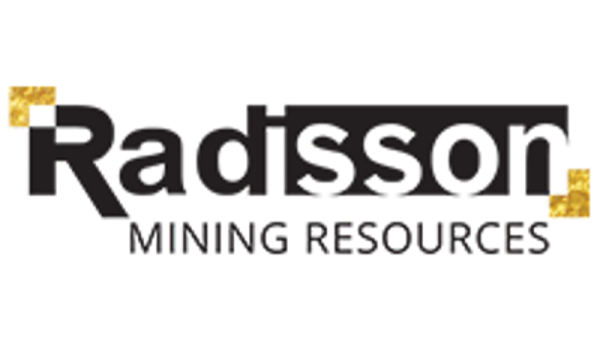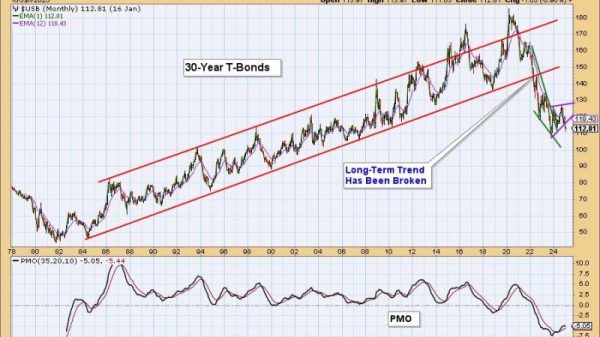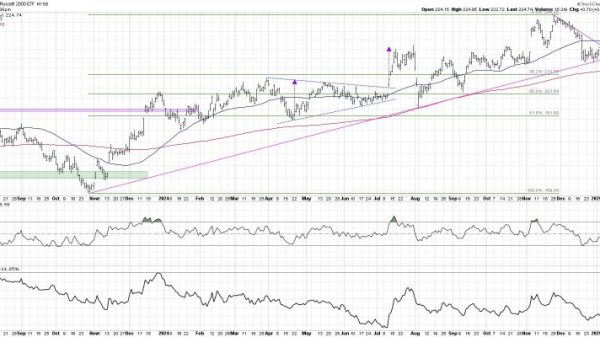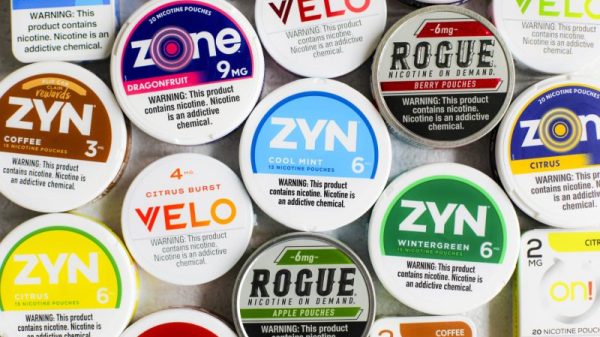Phosphate is mainly used in the form of fertilizer for crops and animal feed supplements. Only 5 percent of world phosphate production is used for other applications, such as corrosion prevention and detergents.
Demand for phosphate fertilizers had created a US$54.6 billion market by 2023, and that figure is expected to grow at a compound annual growth rate of 5.3 percent through 2030 to reach US$78.4 billion.
‘One of the primary factors influencing the worldwide market for phosphate fertilizers is the increasing focus on sustainable agriculture,’ according to Persistence Market Research. ‘Phosphate fertilizers, which are widely recognized for their ability to augment soil fertility and enhance crop productivity, are crucial for the pursuit of sustainability objectives in the agricultural industry.’
In its latest phosphate report, the US Geological Survey (USGS) states that global production of phosphate slipped in 2023 alongside lower demand in reaction to 2022’s high phosphate prices. Most of 2023 was marked by volatility in the market as lower production met with increased consumption.
‘World consumption of P2O5 contained in fertilizers was estimated to have been 45.7 million tons in 2023 compared with 43.8 million tons in 2022,’ the USGS reported. ‘World consumption of P2O5 in fertilizers was projected to increase to 50 million tons by 2027. The leading regions for growth were expected to be Asia and South America.’
This list of the top phosphate countries by production is based on data from the USGS. Those interested in the phosphate mining sector will want to keep an eye on phosphate production data and mining companies in these countries.
1. China
Mine production: 90 million metric tons
China’s phosphate production decreased in 2023 to 90 million metric tons (MT), down from 93 million MT in 2022, but it is still first on the list of top phosphate-producing countries by a long shot. The drop in Chinese output is likely a result of the nation’s environmental crackdown on the mining industry.
The country also has the second largest phosphate reserves in the world, with 2.8 billion MT of the commodity. China’s government has placed restrictions on phosphate exports in an effort to drive down domestic prices of the fertilizer with its own supply. China is also the third largest producer of fertilizer mineral potash.
2. Morocco
Mine production: 35 million metric tons
As the second largest phosphate-producing country, Morocco produced 35 million metric tons of the fertilizer in 2023, down from 39 million MT in the previous year. The North African nation’s phosphate output is expected to increased in the coming years due to ongoing capacity expansions, which are expected to be completed by 2026.
Morocco holds the world’s largest phosphate reserves at 50 billion metric tons, accounting for over 67 percent of total global phosphate reserves.
3. United States
Mine production: 20 million metric tons
In 2023, US phosphate mining production totaled 20 million metric tons, a slight drop of 200,000 metric tons from the previous year. The nation’s nine producing phosphate mines are located across four states: Florida, North Carolina, Idaho and Utah. Florida is home to global giant Mosaic (NYSE:MOS), which is one of the largest phosphate producers in the US.
Most phosphate rock mined in the US is used for manufacturing phosphoric acid and superphosphoric acid. These types of wet-process phosphate products are used for items such as animal feed supplements. About a quarter of this is exported in the form of merchant-grade phosphoric acid, upgraded granular diammonium and monoammonium phosphate fertilizer, as well as other fertilizer products, according to the USGS.
4. Russia
Mine production: 14 million metric tons
Russia’s phosphate output in 2023 was on par with the previous year, coming in at 14 million metric tons. As per the US Geological Survey, the country has phosphate reserves of 2.4 billion MT. Russia is also the second largest producer of potash.
A significant portion of this phosphate is produced by PhosAgro subsidiary Apatit from apatite minerals at the Khibiny deposit, which is located east of Finland in Russia’s Kola Peninsula. Phosphate operations are also found in Perm Krai at the Oleniy Ruchey apatite mine and processing facility owned by the Acron Group’s North-Western Phosphorous Company.
European nations were previously Russia’s biggest phosphate customers in the global market, but the country’s war in Ukraine initially had an impact, directly influencing phosphate prices. However, Russian phosphate exports were supported through increases in shipments to countries including India and Brazil.
5. Jordan
Mine production: 12 million metric tons
Jordan’s phosphate mining output rose slightly from the previous year, coming in at 12 million metric tons in 2023. Its phosphate reserves stand at an estimated 1 billion MT.
The country’s sole phosphate producer is state-owned Jordan Phosphate Mines Company, which operates as a phosphate miner and fertilizer producer. The company operates three mines and bills itself as the second largest phosphate exporter and the sixth largest producer of phosphate in the world. It reports that its production capacity exceeds 11 million metric tons of phosphate annually.
6. Saudi Arabia
Mine production: 8.5 million metric tons
Saudi Arabia produced 8.5 million metric tons of phosphate last year, down by 500,000 MT from 2022’s output level. The country is sitting on 1.4 billion MT of phosphate reserves.
The Saudi Arabian Mining Company, also known as Ma’aden, produces up to 5 million MT of concentrated phosphate rock per year.
The Wa’ad Al Shamal Minerals Industrial City, an integrated phosphate fertilizer production complex, is a US$8 billion joint venture investment between Ma’aden at 60 percent, chemical manufacturer SABIC (TADAWUL:2010) at 15 percent and the Mosaic Company (NYSE:MOS), the largest potash and phosphate producer in the US, at 25 percent. However, in April 2024, Mosaic announced plans to sell its stake to Ma’aden for US$1.5 billion, a move that would bring the latter company up to 85 percent.
7. Brazil
Mine production: 5.3 million metric tons
Brazil, another of the top phosphate countries by production, produced 5.3 million metric tons of phosphate in 2023 compared to 6.2 million MT in 2022. Brazil has a booming agricultural sector and is one of the world’s largest fertilizer consumers and importers.
Mosaic is the country’s largest producer of phosphate and nitrogen. It also operates Brazil’s only potash mine. Swedish fertilizer company Eurochem launched a new US$1 billion phosphate fertilizer production facility in the State of Minas Gerais, Brazil in April 2024. The facility has a phosphate mine and plant complex with an annual production capacity of 1 million MT of advanced phosphate fertilizers.
8. Egypt
Mine production: 4.8 million metric tons
Egypt’s phosphate-mining production in 2023 was 4.8 million metric tons, down 200,000 MT from 2022 output levels. According to the US Geological Survey, Egypt’s phosphate reserves now sit at 2.8 billion MT.
The phosphate company Misr Phosphate operates the Abu Tartour, the Sibaiya and the Red Sea mines, all of which host high grades.
9. Peru
Mine production: 4 million metric tons
Peru’s phosphate output of 4 million metric tons in 2023 was on par with the previous year. About 98 percent of US phosphate imports originate from Peru.
Peru’s investment agency ProInversión made a US$940 million commitment in mid-2024 for the expansion Fosfatos del Pacífico’s Bayóvar mine in the Piura region, which is expected to bolster the country’s domestic phosphate production for the next 10 years.
10. Tunisia
Mine production: 3.6 million metric tons
Tunisia’s phosphate output in 2023 was nearly on par with the previous year, coming in at 3.6 million metric tons. Tunisia is home to the fourth highest phosphate reserves in the world at 2.5 billion MT.
The North African country has been rising among the ranks of the world’s largest phosphate producing nations. Last year, Tunisia’s state-owned phosphate firm Gafsa Phosphate Company ramped up its production as part of its US$76 million investment program.
FAQS for phosphate
What are phosphates?
Phosphates are compounds that usually include phosphorous and oxygen, and can have one or more common elements, such as sodium, calcium, potassium and aluminum.
Where are phosphate compounds found?
Phosphate is mostly found in phosphate rock, a non-detrital sedimentary rock that contains high amounts of phosphate minerals. Phosphate rock can come in different forms such as quartz, calcite, dolomite, apatite, iron oxide minerals and clay minerals.
Is phosphate the same as phosphorus in fertilizer?
Phosphate is the natural source of phosphorous, which provides essential nutrients for plant growth and development.
Securities Disclosure: I, Melissa Pistilli, hold no direct investment interest in any company mentioned in this article.





























